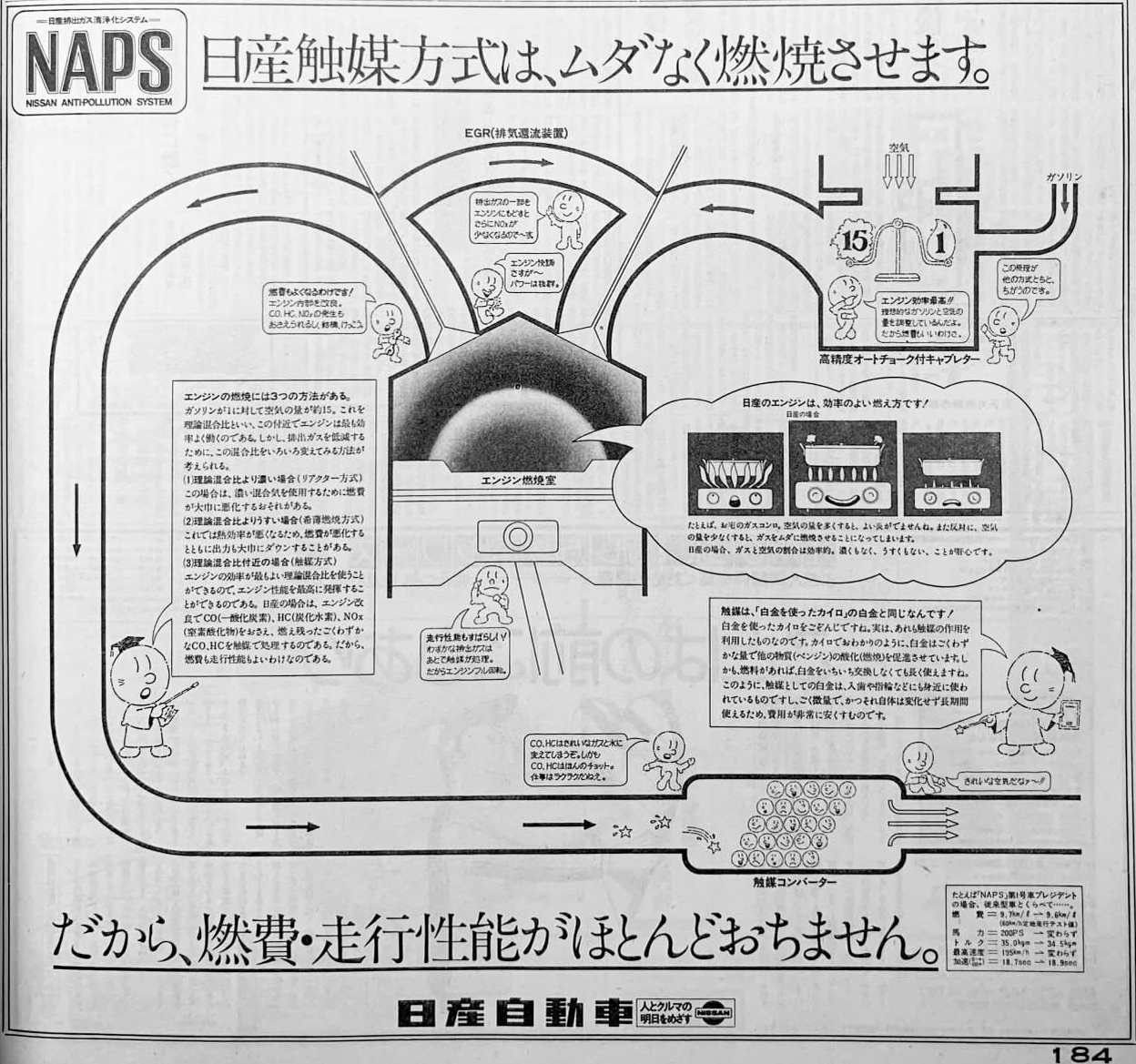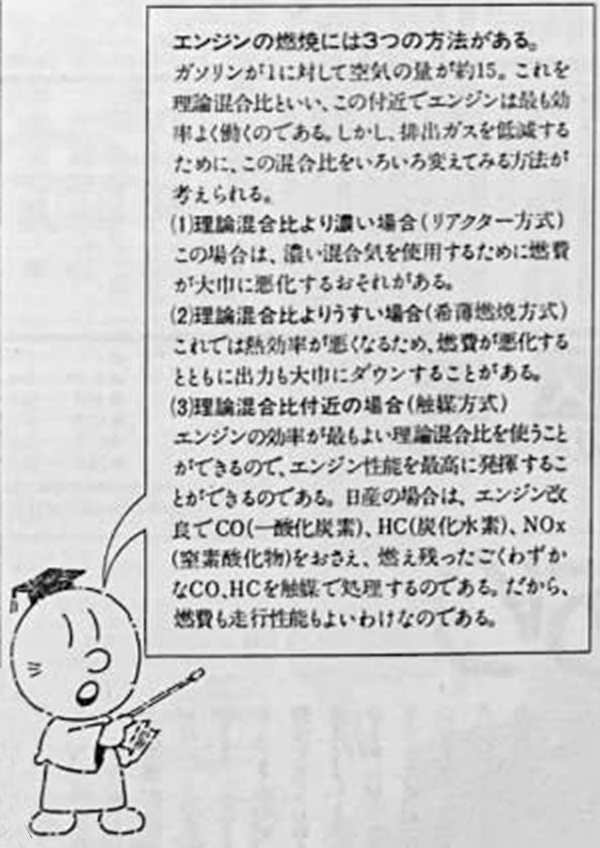<-- back to NAPS
1975 newspaper advertisement featuring NAPS-chan
== 日度排出ガス清浄化システムー == == Nissan Exhaust Gas Purification System == NAPS NISSAN ANTIPOLLUTION SYSTEM
日産触媒方式は、ムダなく燃焼させます。
The Nissan catalytic converter method burns fuel without waste.

だから、燃費·走行性能がほとんどおちません。
Therefore, fuel economy and driving performance are hardly affected.
Advertising tagline: Aiming tomorrow for people and cars (harmony)
日産自動車
人とクルマの明日をめざす
Nissan Motors
Aiming for the future of people and cars
NISSAN
Scholar NAPS-chan:
触媒は、「白金を使ったカイロ」の白金と同じなんです!
白金を使ったカイロをごぞんじですね。実は、あれら触媒の作用を利用したものなのです。カイロでおわかりのように、白金はごくわずかな量で他の物質(ペンジン)の酸化(燃焼)を促進させています。しから、燃料があれば、白金をいちいち交換しなくても長く使えますね。
このように、触媒としての白金は、入歯や指輪などにも身近に使われているものですし、ごく微量て、かつそれ自体は変化せず長期間使えるため、費用が非常に安くすものです。
The catalyst is the same as the platinum in "Platinum Heaters"!
You're probably familiar with platinum heaters, right? In fact, they make use of the action of those catalysts. As you can see from the heaters, a very small amount of platinum accelerates the oxidation (combustion) of other substances (benzine). Therefore, as long as you have fuel, you can use it for a long time without having to replace the platinum every time.
In this way, platinum as a catalyst is commonly used in dentures and rings, and because it is used in very small amounts and can be used for a long time without changing itself, it is very inexpensive.
Scholar NAPS-chan

エンジンの燃焼には3つの方法がある。
ガソリンが1に対して空気の量が約15。これを理論混合比といい、この付近でエンジンは最も効率よく働くのである。しかし、排出ガスを低減するために、この混合比をいろいろ変えてみる方法が考えられる。
(1)理論混合比より濃い場合(リアクター方式)
この場合は、濃い混合気を使用するために燃費が大巾に悪化するおそれがある。
(2)理論混合比よりうすい場合(希海燃焼方式)
これては熱効率が悪くなるため、燃費が悪化するとともに出力も大巾にダウンすることがある。
(3)理論混合比付近の場合(触媒方式)
エンジンの効率が最もよい理論混合比を使うことができるので、エンジン性能を最高に発揮することができるのである。日産の場合は、エンジン改良でCO(一酸化炭素)、HC(炭化水素)、NOx(窒素酸化物)をおさえ、燃え残ったごくわずかなCO、HCを触媒で処理するのである。だから、燃費も走行性能もよいわけなのである。
There are three ways of combustion in engines.
The ratio of gasoline to air is about 15 parts. This is called the theoretical mixture ratio, and engines work most efficiently around this ratio. However, there are ways to change this mixture ratio in various ways to reduce exhaust gas emissions.
(1) When the mixture is richer than the theoretical mixture ratio (reactor method)
In this case, fuel efficiency may decrease significantly because a rich mixture is used.
(2) When the mixture is leaner than the theoretical mixture ratio (lean sea combustion method)
This results in poor thermal efficiency, which can lead to poor fuel efficiency and a significant drop in output.
(3) When the mixture is close to the theoretical mixture ratio (catalyst method)
The theoretical mixture ratio, which is the most efficient for the engine, can be used, allowing the engine to perform at its best. In the case of Nissan, engine improvements have reduced CO (carbon monoxide), HC (hydrocarbons), and NOx (nitrogen oxides), and the very small amount of remaining CO and HC is treated with a catalyst. This is why the fuel economy and driving performance are both good.

![[Datsun 1200 encyclopedia]](/wiki/upload/wiki.png)